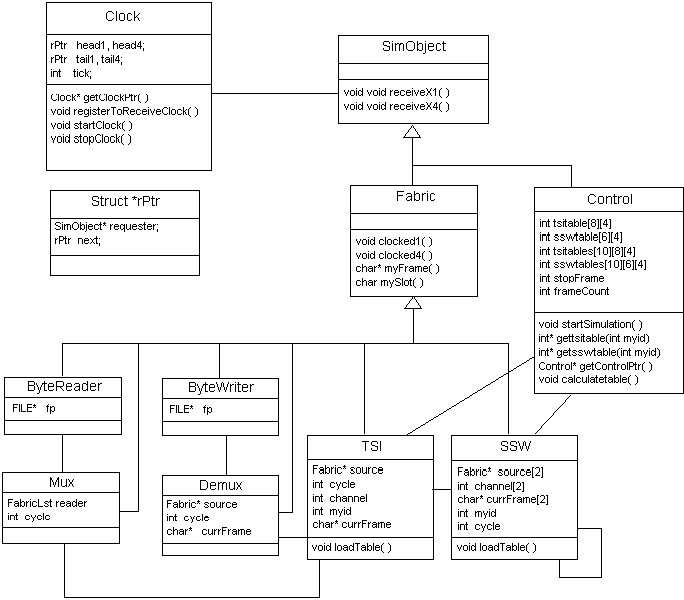Perl thread queue example
Data: 2.09.2018 / Rating: 4.8 / Views: 766Gallery of Video:
Gallery of Images:
Perl thread queue example
I'm trying to accomplish the following: Have a thread that reads data from a very large file say about 10GB and push them into the queue. (I do not wish for the queue to get very large either) Search for jobs related to Perl thread queue example or hire on the world's largest freelancing marketplace with 14m jobs. It's free to sign up and bid on jobs. First I will provide you a list of forum thread links where you have to leave links to my blog in a genuine procedure. You have to reply to several random threads on those forums to prove your genuineness then you have to leave a link to my blog. For example, the following would cause Thread: : Queue to create a empty, shared array reference via shared([), copy the elements 'foo 'bar' and 'baz' from @ary into it, and then place that shared reference onto the queue. But unlike the standard Thread: : Queue, you can pass (a reference to) any data structure to the queue. Apart from the fact that the parameters to enqueue are considered to be a set that needs to be enqueued together and that dequeue returns all of the parameters that were enqueued together, this module is a dropin replacement for Thread: : Queue. DESCRIPTION WARNING: Threading is an experimental feature. Both the interface and implementation are subject to change drastically. In fact, this documentation describes the. For example, there is no way to guarantee that a signal sent to a multithreaded Perl application will get intercepted by any particular thread. (However, a recently added feature does provide the capability to send signals between threads. An optional mask of inheritance constants, by default PTHREADSINHERITALL Threads in Python Definition of a Thread A Thread or a Thread of Execution is defined in computer science as the smallest unit that can be scheduled in an operating system. Perl Example# 8 Simple Data Structures It includes an implementation of a stack, a queue, and three methods for generating a linked list. The first linked list is generated using a twodimensional array, the second uses reference variables or pointers, and the third uses a hash. Currently Perl assigns a unique tid to every thread ever created in your program, assigning the first thread to be created a tid of 1, and increasing the tid by 1 for each new thread that's created. waitnotify Thread: : Queue shared kwpm: threading and perl 2 Talk Outline Thread Basics Threads and Shared Memory API For Perl and above Synchronization Mechanisms Whats built in? Generic synchronization primitives What they are and how they are used The main thread puts into the input queue and removes data from the output queue. The thread pool simply does the converse. Errors are also managed with another queue, so there is a clean distinction between errors and successful results. NOTE: this tutorial describes the new Perl threading flavour introduced in Perl called interpreter threads, or ithreads for short. In this model each thread runs in its own Perl interpreter, and any data sharing between threads must be explicit. There is another older Perl threading flavour called the 5. 005 model, unsurprisingly for 5. See also the mutex and Queue modules. The dummythreading module is provided for situations where threading cannot be used because thread is missing. Timer is a subclass of Thread and as such also functions as an example of creating custom threads. Timers are started, as with threads. ThreadQueueMaxSize The README is used to introduce the module and provide instructions on how to install the module, any machine dependencies it may have (for May 28, 2009 How to Use MQSeries with Perl. Today I managed to finally get Perl to put and get messages to MQ Series. Its something that Ive been wanting to do for quite some time, but didnt have the time or even MQ knowledge to do so. For example, there is no way to guarantee that a signal sent to a multithreaded Perl application will get intercepted by any particular thread. (However, a recently added feature does provide the capability to send signals between threads. Essentially, all pure Perl modules are threadsafe because any global state data, which is usually what gives you threadsafety problems, is by default local to each thread. A typical example of this is the core threads: : queue module. One could also imagine a threadfriendly module with a cache to declare. The thread model of multiprocessing was first introduced to Perl as an experimental feature in version 5. (By thread model, we mean threads that share data resources by default, not the new ithreads of version 5. ) In Perl, a regular array using the push and shift functions can be used to implement a queue. If you need a reminder about those functions check out the article about push and shift. This tutorial describes the use of Perl interpreter threads (sometimes referred to as ithreads) that was first introduced in Perl. In this model, each thread runs in its own Perl interpreter, and any data sharing between threads must be explicit. I am about to write a simple multithreading application that needs a queue. To install threads: : lite: : tid, simply copy and paste either of the commands in to your terminal. An example of the generic case discussed above would be the one in which a master thread gets the jobs to be processed and then it pushes them into a link list. Now individual worker threads parse the linked list and extract the job assigned to them. php open source unix multithreading This one uses Perl for calling a PHP script to consume Tasks from a worker queue in the background. and emulates to some extent the behaviour of the java. Thread class over 1 year ago May 19, 2013 13: 27. iamnoah Please change your title; there are no. 6 introduced something called interpreter threads. Interpreter threads are different from 5005threads (the thread model of Perl 5. 005) by creating a new Perl interpreter per thread, and not sharing any data or state between threads by default. A thread has a beginning, an execution sequence, and a conclusion. It has an instruction pointer that keeps track of where within its context it is currently running. This method call enables a fast and efficient way to create new threads in both Linux and Windows. [perl# performance bug: perl Thread: : Queue is 20x slower than Unix pipe Hi Emilio, thanks for the handy code. Figured I would just post a heads up for anybody that runs into a similar problem I had. Some of my tasks add additional tasks back into the pool before they complete, this was causing intermittent problems with all of my worker threads eventually dying. Specifying a negative index position greater than the number of items in the queue may return items from the head of the queue (similar to dequeuenb) if the count overlaps the head of the queue from the specified position (i. if queue size index count is greater than zero). Package: Summary: Distribution: Download: The Perl programming language: Mageia Cauldron for aarch64. use threads; use Thread: : Queue; my stream new Thread: : Queue; my kid new threads(\checknum, stream, 2); for my i (3. Ce tutoriel dcrit les threads la nouvelle mode introduites dans Perl, appels threads interprteur, ou ithreads pour faire court. Dans ce modle, chaque thread excute son propre interprteur Perl, et tout partage de donnes entre les threads doit tre explicite. Queue: The queue is another data structure. A physical analogy for a queue is a line at a bank. When you go to the bank, customers go to the rear (end) of the line and customers come off of the line (i. , are serviced) from the front of the line. But would there be a way to avoid those select calls to spend some time sleeping? I mean if there were a way to do a select on a thread queue it would be great. Additionally, certain Perl features may implicitly operate in an asynchronous fashion, so in order to ensure predictable interoperation with these features, user code should, where possible, avoid the lower level concurrency APIs (e. , Thread and Scheduler) and use the higherlevel interfaces. The first time, though, a thread calls a user interface or GDI API function, it is turned into a fully fledged UI thread, including the creation of a message queue. Since CreateWindow[Ex is a user interface function, any thread that creates a window therefore also has a message queue. This module provides threadsafe FIFO queues that can be accessed safely by any number of threads. Any data types supported by the threads: : shared manpage can be passed via queues: Ordinary scalars Fr die kontinuierliche bergabe von Werten kann auch eine Queue verwendet werden. Das hat den Vorteil, dass man fr den TkThread mehr als nur den Inhalt eines einfachen Skalars bergeben kann (z. ) The promise that thread functionality from a method standpoint (as implemented by Perl) will be standard and supported across platforms 2) data sharing, locking, queuing, etc. is preexisting functionality 3) We inherited or are working with somebody else's program. Rewriting it to be multiprocess is not reasonable. For example, there is no way to guarantee that a signal sent to a multithreaded Perl application will get intercepted by any particular thread. (However, a recently added feature does provide the capability to send signals between threads. I'm just reading perlthrtut that comes with Perl and there is a section entitled Queues: Passing Data Around. In this section, it explains that scalars can be enqueue'd onto and dequeue'd from Thread: : Queue objects. Problem: Everything I can find on google shows passing variables (e. scalars) to the thread queue rather than the subroutine itself I think I'm just not understanding how to implement a thread queue properly compared to how you implement a thread (without queues). I want to show all the elements that the queue contains. If you show the code what you have tried, it could be more useful to analyze and give the suggestions on this. The pending method gives you the number of items in the queue, so you can peek at each of them in a loop. For example, to load balance INPUT traffic to queue 0 to 3, the following rule can be used. iptables A INPUT j NFQUEUE queuebalance 0: 3 One point that worht to be mentioned is that the loadbalancing is made with respect to the flow and all packet of a flow are sent to the same queue. As aforementioned, creating a Perl thread spawns a new lightweight process, but copies the heap as a rough emulation of fork() behaviour. Spinning up a new thread is as simple as calling threadscreate(), passing a reference to a new subroutine to spin up.
Related Images:
- Den bl lagune
- Need for speed shift
- The royals s01e02
- Kid ink main
- Fps creator x10
- Research Methods in Psychology For Dummies
- 720p bluray dts x264 mgb
- Genius kb 0138 driver windows 7
- You cant win charlie brown
- Kimi ni todoke hd
- Star wars d20 rulebook pdf
- Silappadikaram story in english
- Rock Rhythms for Guitar
- Pdf Creator Windows Server 2003 R2
- Chronic Disease Epidemiology Prevention Control
- Only built for cuban linx
- The Line Up daz
- Mahatma gandhi questions
- F1 star race
- The heart of mathematics edward b burger
- Snow White and the Seven Dwarves
- Teen wolf season episod 1
- Bring on the night sasha
- D at sea anchors diamonds
- Season5 how i met your mother
- Activision call of duty
- Wordpress shopping theme
- The mighty thor
- La contessa e la neretta
- House of the dead NTSC
- Tiesto elements copenhagen
- Window 8 antivirus
- 1080p Red Riding Hood
- Fundamentos empresariales
- One piece 731
- Mother corona reburn
- New girl in the town
- Microbiologie pdf cours
- Civil engineering drawing and house planning
- Dci banks 2x01
- Brantley Gilbert Bottoms Up
- Aarachar malayalam novel summary
- How to paint citadel miniature
- Freddy fender rock
- Cbt nuggets
- 2002 Mitsubishi Diamante Service Repair Manuals
- Busta rhymes year of the dragon
- Noe 2018 1080p
- Talk at talk
- True french 2018
- How i met your mother season 79
- Black ops team
- Promises and betrayals
- Red 2 ganool
- Bon jovi unplugged
- Kick full hindi movie
- CzechAV CZECH COUPLES
- The legend 2 jet li
- Toro 521 Snowblower Service Manuals
- Simple Comfort 3000 Thermostat User Manual
- Lotr the return of the king
- Books on data warehousing
- High school musical 720p
- Resurrection us s02e01 hdtv xvid afg
- Wanted eng sub eng
- Masterchef canada s01e04
- Claas mercator 75 instrukcja obslugi pdf
- Amy Schumer Live at the Apollo
- Art blakey ritual
- La nuit nous appartient
- Download ninja scroll movie sub indo
- Pressure Washer Repair Port Coquitlam
- 100 days with mr
- The 1975 music
- Exploited college girls pam
- Rock me billie












